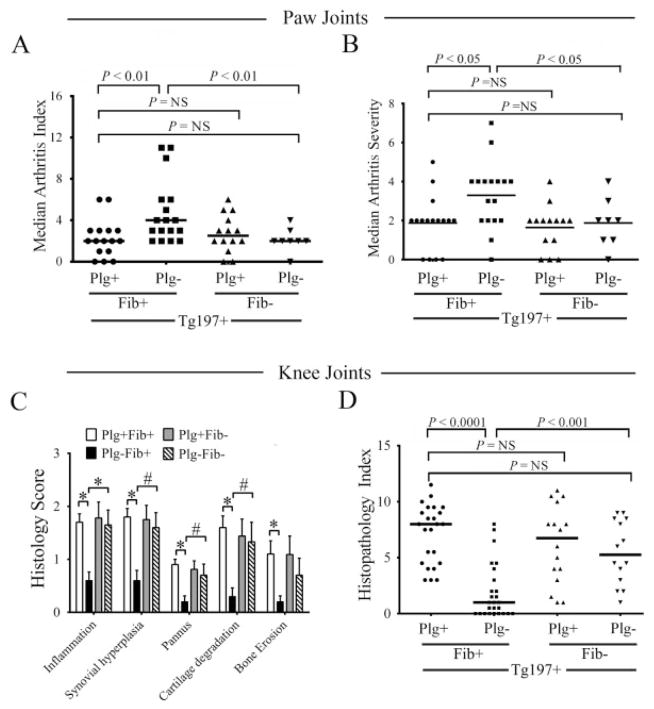Figure 4.
Genetic elimination of fibrinogen reverses both the proarthritic and antiarthritic phenotypes observed in the paws and knees of plasminogen-deficient Tg197 mice. A and B, Scatterplots of the arthritis index (A) and arthritis severity scores (B) in the paws of Tg197+ mice with single and combined deficits in plasminogen and fibrinogen. Note that plasminogen deficiency resulted in worsened arthritis in the paws, and superimposing fibrinogen deficiency significantly lessened arthritis in this location. The loss of fibrinogen alone had no significant impact on arthritis in the paws relative to control Tg197+ mice. C, Histology scores of inflammatory joint disease parameters in the knees of Tg197+ mice with single and combined deficits in plasminogen and fibrinogen. Bars show the mean ± SEM. * = P < 0.001; # = P < 0.01, by Student’s t-test. D, Scatterplot of histopathology index composite scores in the knees of Tg197+ mice with single and combined deficits in plasminogen and fibrinogen. In contrast to the paws, plasminogen deficiency strongly lessened arthritis in the knees, and superimposing fibrinogen deficiency significantly worsened arthritis in this location. The loss of fibrinogen alone had no significant impact on arthritis in the knees relative to control Tg197+ mice. In A and B, symbols represent individual mice; in D, symbols represent individual knees. Horizontal bars show the median. P values were determined by Mann-Whitney U test. NS = not significant.

